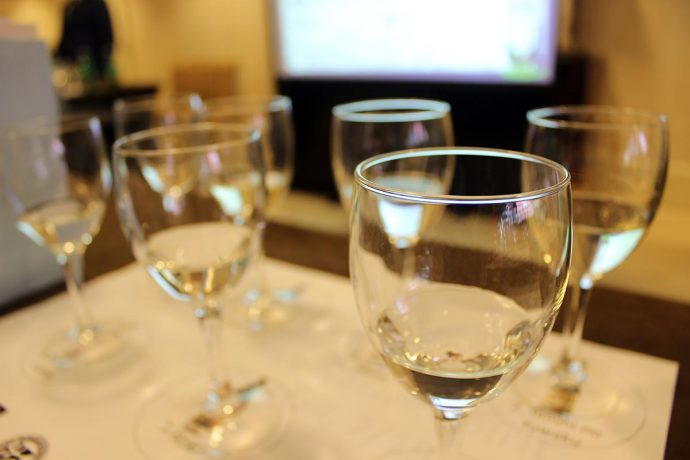In the world of distilled spirits, nothing is as simple as it seems. There are the standard categories, of course—whiskey, vodka, rum, gin, etc.—and it’s easy to think that once you’ve mastered those, there’s nothing out there that can surprise you. But outside the bubble of Western drinking culture, there are thousands of local and regional alcoholic beverages that are enjoying unprecedented popularity. Shochu, a traditional Japanese spirit, is one that deserves some serious attention.
A low-alcohol spirit sometimes referred to (incorrectly) as “Japanese vodka,” shochu actually surpassed sake as the most popular alcoholic beverage in Japan in 2003, much to the surprise of the industry. But thanks to its increasing presence overseas, an explosion of domestic shochu bars, and a general public impression that shochu is healthier than other booze (a dubious claim at best), that boom has continued well into the 2010s.
What better time, then, to finally learn what shochu is all about? Thanks to an enlightening seminar hosted by Mizu Shochu at Tales of the Cocktail, we received a crash-course on this classic Japanese drink. Here’s what we learned.
What is Shochu?
Shochu is, like any other distilled spirit, made from a base of fermented sugars. There’s a pretty wide array of grains and other ingredients that can be used, from chestnuts to green tea, but the most common are rice, barley, buckwheat, sweet potatoes, or sugar. How those ingredients are prepared, though, is unlike just about any other spirit on earth.
Most grains and starches require some processing to release their sugars before they can be fermented. The most widely known is the process of malting, during which barley is sprouted before being used to make beer or whiskey. In the case of shochu, though, a fungus known as koji is used to prepare the base mash. It’s a hugely important part of Japanese cuisine in general, as it’s also used in the production of soy sauce, miso, and sake.
Shochu is typically bottled at around 25% ABV (though it can legally go up to 36% or 45%, depending on the variety), making it quite low in alcohol content compared to most distilled spirits. As a result, the final product is quite smooth and lacks any substantial alcohol burn on the finish. The flavor is reminiscent of sake, particularly for rice-based shochu, but can vary significantly with different ingredients and distilling techniques. It’s a subtle spirit, and one that works well in lighter cocktails.

A shochu cocktail at Tales of the Cocktail | Photo: Will Shenton
The Different Varieties of Shochu
There are two main categories of shochu: korui shochu and honkaku shochu. Korui shochu is distilled multiple times, usually in modern column stills, making it a bit more mass-produced than its traditional counterparts. It’s regarded as a fairly cheap alcoholic drink, and while there are definitely good korui products out there, it doesn’t have a reputation as an artisanal spirit.
Honkaku shochu is generally considered the more “craft” variety of shochu, and is mainly defined by the fact that it’s only distilled once in a pot still. That single distillation allows the final product to retain much more flavor from the base ingredients, as well as a certain funkiness that gives it a distinct character from distillery to distillery.
Honkaku shochu is usually produced in small, mom-and-pop distilleries, many of which employ wooden pot stills and other traditional equipment. Some of these have centuries of history behind them, and have been in their respective families for generations. Because there’s such a broad array of ingredients that can be used to make shochu, each producer has their own, wholly unique recipes and processes.
This makes for a wonderfully diverse spirit category, but it can also be difficult to get a handle on what defines a “typical” shochu. The truth is, there’s no such thing. At Mizu’s seminar, we tasted a flight of seven different varieties, and even among that small cohort the diversity was staggering. From light, subtle, rice-based shochu to funky, in-your-face buckwheat shochu, this is clearly a category that takes years to master from a tasting perspective.
What’s Next for Shochu?
The future is looking bright for shochu. The domestic boom is continuing fairly unabated in Japan, and craft cocktail culture in the United States and abroad is—slowly but surely—beginning to embrace it as an artisanal ingredient worthy of recognition. Due to its relatively low alcohol content, it’s even being used to make cocktails in restaurants that aren’t licensed to sell high-proof spirits (which may sound lame on paper, but try a Shochu Bloody Mary sometime and get back to us).
With this much working in its favor, don’t be surprised to see shochu on the menus of your favorite bars in the very near future. It may have been around for hundreds of years, but it seems like the rest of the world is finally catching up.
Photo: A flight of shochu at Tales of the Cocktail 2016 | Will Shenton



